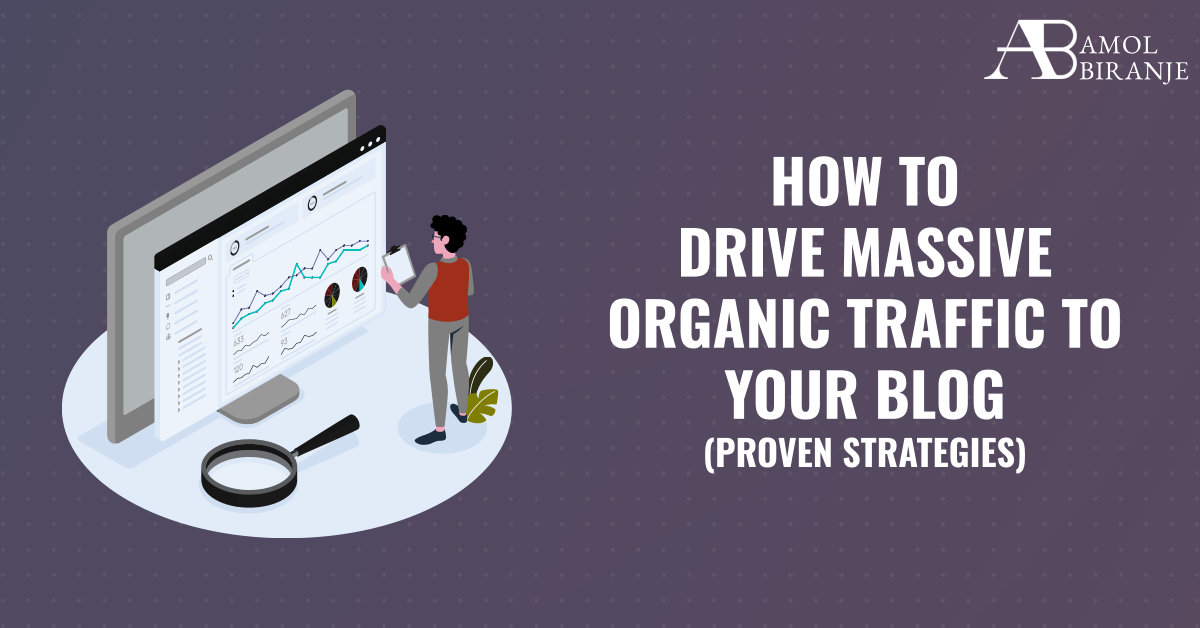Introduction
In today’s digital age, blogging has become a powerful platform for individuals and businesses to share their ideas, expertise, and products with the world. However, with millions of blogs on the internet, it can be challenging to stand out from the crowd and attract a significant audience. Driving massive organic traffic to your blog is essential to increasing your reach, establishing authority, and achieving your blogging goals. In this How to Drive Massive Organic Traffic to Your Blog article, we will explore proven strategies that will help you attract a flood of organic traffic to your blog.
Define Your Target Audience
Before you start creating content, it’s crucial to identify and understand your target audience. Determine the demographics, interests, and pain points of your ideal readers. This information will guide your content creation process and ensure that you produce valuable and relevant articles that resonate with your audience.
Conduct Keyword Research
Keyword research is the backbone of SEO (Search Engine Optimization). Employ specialized keyword research utilities to discover pertinent and high-traffic keywords that align with your niche. Incorporate these keywords naturally into your blog posts, titles, and meta descriptions to increase the likelihood of your content appearing in search engine results.
Create High-Quality Content
Content is king, and producing high-quality, valuable, and informative articles is crucial to attracting organic traffic. Craft well-researched, engaging, and shareable content that provides solutions to your audience’s problems. Long-form content tends to perform better in search engines, so aim for in-depth articles that cover topics comprehensively.
Optimize for On-Page SEO
Optimize your blog posts for on-page SEO elements. This includes crafting compelling meta titles and descriptions, using proper header tags (H1, H2, H3, H4), incorporating relevant keywords throughout the content, and using alt tags for images. Proper on-page SEO signals to search engines that your content is valuable and relevant to users.
Leverage Social Media
Social media platforms are powerful tools for promoting your blog content and driving organic traffic. Share your articles across various social media channels to reach a broader audience. Encourage readers to share your content by including social sharing buttons on your blog.
Guest Blogging
Collaborate with other bloggers or websites in your niche by writing guest posts. Guest blogging allows you to tap into an established audience and gain credibility in your field. Include a link back to your blog in the author bio, which can lead interested readers to your website.
Build Backlinks
Earning backlinks from reputable websites is essential for boosting your blog’s search engine rankings. Emphasize crafting content that possesses inherent link-worthiness, effortlessly drawing backlinks from various other websites. Additionally, reach out to other bloggers or website owners in your industry for link-building opportunities.
Utilize Email Marketing
Email marketing remains a powerful method to nurture relationships with your audience. Encourage visitors to subscribe to your email list to receive updates about your latest blog posts, offers, and promotions. Send personalized and valuable content to keep your subscribers engaged.
Incorporate Visual Content
Incorporate visuals such as images, infographics, and videos into your blog posts. Visual content not only enhances the reader’s experience but also makes your articles more shareable across social media platforms.
Monitor and Analyze
Regularly monitor your blog’s performance using analytics tools. Track the sources of your organic traffic, popular content, and user behavior on your blog. Analyzing this data will help you understand what works best for your audience and fine-tune your strategies accordingly.
Engage with Your Audience
Engage with your blog readers by responding to comments, emails, and messages. Building a strong connection with your audience will foster loyalty and encourage them to return to your blog for more content.
Stay Updated on SEO Trends
Search engine algorithms are continually evolving, so it’s essential to stay updated on the latest SEO trends and best practices. Implementing the most current strategies will ensure that your blog remains visible and competitive in search engine results.
Collaborate with Influencers
Influencers in your niche have a dedicated following. Collaborating with them can expose your blog to a broader audience. Reach out to influencers and propose mutually beneficial partnerships to promote your blog and increase organic traffic.
Harness the Power of Podcasts
Podcasts have gained immense popularity in recent years. Consider starting your podcast or being a guest on existing podcasts. This will expand your reach and attract new visitors to your blog.
Conclusion
Driving massive organic traffic to your blog requires a combination of smart SEO strategies, engaging content creation, and effective promotion. In this How to Drive Massive Organic Traffic to Your Blog post we covered the proven strategies. By defining your target audience, conducting keyword research, creating high-quality content, optimizing for SEO, and leveraging social media and other platforms, you can steadily increase your blog’s organic traffic and achieve your blogging goals.
FAQs
How to Drive Massive Organic Traffic to Your Blog
What is the typical timeframe for observing outcomes from implementing these tactics?
The time to see results may vary depending on various factors, such as your niche, content quality, and promotion efforts. With consistent implementation, you can start noticing improvements in organic traffic within a few weeks to a few months.
Are there any free tools for keyword research?
Yes, several free keyword research tools are available, such as Google Keyword Planner, Ubersuggest, and Answer the Public.
Is guest blogging still effective for driving traffic?
Yes, guest blogging remains an effective strategy for driving traffic to your blog, especially when you collaborate with reputable websites in your niche.
What kind of content attracts backlinks?
Content that provides unique insights, comprehensive data, or solves specific problems is more likely to attract backlinks from other websites.
What is the recommended frequency for sending emails to my subscriber base?
The frequency of your emails depends on your audience and the type of content you provide. Aim for a balance between keeping them engaged and not overwhelming their inbox. Twice a week or once every two weeks is often a good starting point.














0 Comments